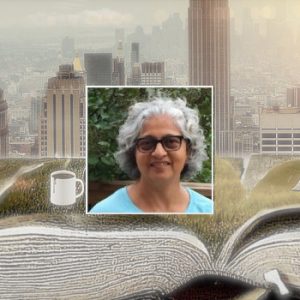I grew up in the rural South during the 1960’s. The state of Georgia is probably the deepest part of the southern part of the United States that anyone can get and still speak English. Well, sort of English. In a small town in Georgia, for me, it was a time to learn about life by just being a kid.
Kids love to climb trees or ride their bicycles in dirt until the wheels fall off. I did those things but I also entertained myself when I discovered that I could blow up spray paint cans in the smelly garbage that we burned in rusted steel barrels. In the autumn, when colorful foliage riots, we would go picking pecans that peppered the nearby grassy pecan tree forest. There, was the memorable discovery one hot, dry summer, that stinging hornets were worse than hell itself. Even today, decades later, I can still feel the horror having discovered that a beloved pet chicken had been attacked and eaten by a pack of wild dogs. The anger I felt that day had rapidly turned into lustful hatred since the killers had had to enter our back yard to commit the vicious act. My back yard. Spending an hour or two hunting down the pack in a neighboring junkyard and shooting BB’s at them, I suppose, was a rite of growing up.
So that should be a respectable beginning to my oil pallet tint selections. A minute suggestion of color in the Grisaille grays. But I want no Bob Ross happy little trees or clouds here.
The war in Southeast Asia was on the news often but it wasn’t really conveyed to me just how much hatred, fear, death, and insanity was going on there. It was just a movie to me. Something you see while eating popcorn. I would need a few more years of growing up to finally see it for what it was.
Maybe just a tiny dab of that, too, to enhance the underwashing colors on the pallet.
I was but a 9 year old, wide-eyed lad when we moved from the Maritimes of Canada to the South. To my huge astonishment that first year there, I had discovered a new species of humans. I had discovered black people. Well, as I could define it, they were dark brown. As I walked down one side of Merritt Street, I spied, on the other side, a boy of my age with skin just as dark brown as it could be and short, black steel wool for hair. I had never seen such a variation before so I crossed the street to investigate. Apparently, this was a very big faux pas for a white boy to commit. An older white man, back on his side of the street, yelled at me, “Get away from that nigger!” Of course, I had no idea what a “nigger” was but I sure knew that I was not in a place where I was supposed to be. Nor did I have an idea why. Many years later, I knew why. Perhaps it was because I was Canadian or perhaps it was because I was still rebelling against authority. Nonetheless, I was never biased against “niggers” because I had no reason to be. The world went on without me to hate and kill niggers.
As I add slight hue and texture in the near-abstract reflection on this canvas’s small corner of absurdity, the single, extremely complex noun, “Vietnam” of the 1960’s and early 1970’s now gets squeezed onto the oil pigment mixing board. It will be just an odd shaded tint for the background underpainting of such psychosis. You can’t see much but the foreshadowing here. But, then again, maybe it is more than that in its affect.
There once was a young, pretty teacher and a 13-year-old schoolboy quite captivated by her. They became friends. They became close friends. They… well, they did. She was charged with second-degree rape because he impregnated her. The law said that no matter how much the teen wanted her, loved her emotionally and sexually, what he did to her made her a criminal. Oh, what a somber color it is to smear across the canvas. The hue is so dark and subdued, it practically sucks the light out of the soul. Here I brush on despair and hopelessness. The law said that their love for each other was atrocious. They were caught together once again and the young pretty teacher went to prison for 7 years. Later, the two got married and had more children and lived happily for 14 more years. The story ending has a light, airy wash to it but adding this paint to the canvas makes for clear, murky brushstrokes in the impressionistic drift. The understated image so far begins to develop enough to bring focus sharper on the feeling that the opus is attempting to express.
Twenty years ago, I moved back to Canada to enjoy the twilight of my life. My marriage to a young black woman lasted for 10 years. Another 10 year marriage was to my current Chinese wife although we are legally separated. Both women and I are still great friends with plenty of love for one another. So, two failed marriages. There: I added some more cheerful color to a small imperfection in this back drop. Not too much, I think.
Here in the melting pot of human society that we call Toronto, live and love Jamaicans, Koreans, Chinese, Vietnamese, Russian, Ukrainian, and a plethora of others in a list that I have not memorized. There are roughly 4,200 religions, churches, denominations, religious bodies, faith groups, tribes, cultures, and social movements here that can be considered religions. Of course I am not not going to dip the paintbrush in the pallet of oil shades that we can consider the acronym “LGBT…” sorry, I’ve not kept up with the additional letters to that. Let me dab the brush into a different part of the mixing board. Religion differs from private belief in that it has a public aspect. These religions tint the oils with sermons, commemoration of the activities of a God or gods, sacrifices, festivals, feasts, trance, rituals, liturgies, ceremonies, worship, initiations, funerals, marriages, meditation, invocation, music, art, dance, and myriad other aspects of human culture. But I am choosy about what tints I want to use.
Hijab, niqab, burka – there are many different kinds of coverings worn by Muslim women in Toronto. Some women wear a headscarf to cover their head and hair, while others wear a burka or niqab, which also covers up their face. It’s not uncommon to see a woman, walking alone or with children, underneath a black tent with just two holes for her to see where she’s going. I used to think it was funny. But now, I use deep, incredible black to paint the canvas with. Unfortunately this black is as black as I can get. And I need blacker. Much blacker.
FGM is another acronym which describes the darkness of this image where the genitals of a young girl are deliberately cut. This mutilation is a very painful and dangerous procedure most often carried out on young girls aged between infancy and 15 years old. It is often referred to as ‘cutting’, ‘female circumcision’, ‘initiation’, ‘Sunna’ and ‘infibulation’. It happens in many countries across the world, and is often passed down as a custom in the community. The practice has no religious basis, but some communities have been known to link it to their religious beliefs. Often it is done due to the incorrect belief that it gives some sort of benefit to the girl, and many communities are not aware of the negative medical impacts. I have no darker black that I can add to the painting other than pure carbon black.
An artist should know when to stop adding color or changes to the finished piece. I’m no Edvard Munch nor do I have yellow lead chromate oil paint that obsessed Van Gogh. But did these masters have such feelings in mind when paintings like The Scream or The Prison Courtyard were finished?
Was it inappropriate for me to paint the symptoms of an insane social illness in the middle of the holiday season?





